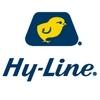Explore all the information on
Hatching - Incubation
Hatching of eggs refers to the production of baby chicks. In early days eggs were hatched by placing them under broody hens. Desi hens proved to be ideal for this purpose. Only 10 to 12 eggs can be put under 1 hen. This method of hatching is highly unsatisfactory for large-scale production of baby chicks. Incubators, which provide similar environment as that of broody hens, but more efficiently, are used at present for hatching of eggs. The incubation period for chicken eggs is 20 to 21 days, and increases up to 30 days for other poultry. After sitting for some days, a broody hen can be given some newly hatched chicks and, if they are accepted, the original eggs can be removed and replaced with more chicks. Thus hens with a better record of mothering can be better utilised for their abilities. Eggs initially need a very controlled heat input to maintain the optimum temperature of 38°C, because the embryo is microscopic in size.
A week long Online Hatchery Management Training will take place from September 16th to 22nd, 2020. It is organized by Vet Nepal in association with Nepal Hatchery Industries Association, and will feature 5 national and 12 international Hatchery Specialists as speakers.
...
Comments : 1
Recommendations: 1
Introduction To achieve good hatchability and chick quality, fertile eggs need careful management from the time they are laid. Environmental conditions during egg collection, egg shell disinfection, transport, pre-storage incubation, storage, pre-warming or during incubation are all important. Inappropriate treatment can result in depressed hatchability, change the pattern of embryo mortality and may also affect post-hatching performance. The investigative procedures can be used...
Comments : 1
Recommendations: 2
1. INTRODUCTION The increasing demand for poultry products and the associated cost of feed and energy along with the economic downturn has encouraged the commercial poultry industry to become more efficient and economical. Currently hatching eggs (HE) are stored between 1-3 days prior to setting, which ensures that the incubator will be filled to capacity. This procedure produces a large hatch quantity in a shorter time with decreased associated costs. There had been several...
Comments : 1
Recommendations: 5
.jpg&w=3840&q=75)

All-in-one mycotoxin extraction method for faster time-to-results - Myco 5-in-1 PLUS
Suggested link
Due to dynamic market demands for day old chicks and the large scale of commercial hatcheries, the storage of hatching eggs is often unavoidable. Although the detrimental effects on hatchability and chick quality have been known for a long time, hatchery managers aim for an optimal utilisation of the considerable capacity of modern incubators and to minimise transports from farm to hatchery. In this way, efficiency is optimised and costs are reduced. Even though...
Comments : 1
Recommendations: 0
Jordon Gruber (DuPont) talked about exposure to bacteria and the different factors involved, during the 8th Symposium on Gut Health in Production of Food Animals in St. Louis, USA....
Comments : 0
Recommendations: 2


DL-Methionine and L-Methionine are Equally Efficient in Broilers
Suggested link
Brooding is the most crucial, critical and decisive period in a breeder chick’s life. Especially the first two weeks. This period has a great impact on future performance of the flock. More than 50% is decided in this period as to how a flock performs for the rest of its life. Mistakes made during this period cannot be corrected later on. If this period is managed correctly, the genetic potential of the bird, in terms of hatching eggs, fertility, hatchability and maximum saleable day old chicks...
Comments : 5
Recommendations: 1
Brian Jordan (University of Georgia) talks about the advances made in the research of this method, during IPPE 2019 in Atlanta, USA....
Comments : 7
Recommendations: 3
.jpg&w=3840&q=75)

Transforming Poultry Farming in India with Srinivasa Farms and Hy-Line
Suggested link
We observe some lame chicks in the first four to five hatches when the breeders are at the initial stage of production. Please suggest a remedy to overcome this problem in the breeder level or at hatchery ...
Comments : 0
Recommendations: 0
Introduction
The basis of the modern poultry meat industry dates back to the late 1950s and nowadays, poultry meat is one of the most important protein sources in human diet. Global poultry meat production in 2000 was 69 million tons and this has been increased to over 97 million tons in 2010 (Windhorst, 2011): an annual production of approximately 70 billion broilers originating from approximately 600 million broiler breeders. These data underline how a relatively...
Comments : 0
Recommendations: 1
Peter Ferket (NC State University) spoke on the effectiveness of different strains of Clostridium on hatchability, during IPPE 2019 in Atlanta, USA....
Comments : 0
Recommendations: 4
Brian Jordan (University of Georgia) shared the results of his research on the use of this air sanitation system in an egg cooler and its effects on hatchability and chick quality, during IPPE 2018 in Atlanta, USA....
Comments : 15
Recommendations: 2
Introduction The neonatal period is a time when the chick requires special management and nutrition Provide good environmental and nutritional conditions for day-old chicks are crucial for obtaining the full performance potential of the chicks later in life and maintaining profitable business for producers. The neonatal chicks remain approximately 24-48 h without feed and water after removal from the hatchery until placement in the farm. This gap between...
Comments : 1
Recommendations: 5
Bacillus subtilis C-3102 spores are receiving increased attention as dietary direct-fed microbial (probiotic) performance enhancers for laying hens and breeders because as a feed supplement they typically are effective for improving egg shell thickness and brown egg shell color (in brown-egg strains), have high survivability through steam pelleting, and are economical (B.s. C-3102; CALSPORIN®, Calpis Co. Ltd, Tokyo, Japan). This specific strain of beneficial microorganism was...
Comments : 4
Recommendations: 0


Effects of <i>Ganoderma lucidum</i> fermentative products supplementation on growth performances, carcass characteristics and immune response in Native Chickens
Suggested link
Figure 1. Temperature profile of experimental group in a day in Experiment 1. ...
Comments : 5
Recommendations: 0
Introduction Given the fact that the poultry industry has been a main contributor to the U.S. food supply over the past two decades, with an increase from $44.4 billion in value of production in 2013 to $48.3 billion in 2014, the necessity of capitalizing on the production of poultry is evident (1, 2). With the increasing trend to systematically remove sub-therapeutic levels of antibiotics from poultry feed due to public demand, poultry producers have been facing new challenges...
Comments : 14
Recommendations: 23
Chicks are still in the Hatcher Mother hen does not exist in modern poultry business. Mother hen under her ‘brood’ keeps her babies away from extreme weather conditions and from predators. She is conveniently replaced...
Comments : 10
Recommendations: 1
Jamesway Incubator Company Inc. is very pleased to announce that Dr. Keith Bramwell has officially joined the company as Senior Technical Advisor. Dr. Bramwell has had an illustrious career in the academic world and has now decided to try the commercial side of the industry. He studied at the University of...
Comments : 0
Recommendations: 0
The NC State University Hatchery Management Workshop 2017 will take place on April 19 and 20. The event is organized by the Cooperative Extension of the Prestage Department of Poultry Science. The objective of this workshop is to provide updated technical and scientific information to understand effects of incubator management on embryo and hatchling.
Topics to discuss:
...
Comments : 2
Recommendations: 5
Introduction Environmental conditions influence metabolic and developmental processes during the perinatal period of mammals and avian species [1,2,3]. Changes in metabolism and development in this period can have long-term effects in later life [2,4]. Particularly glucose metabolism seems to play a crucial role in survival and early development of animals [1,5,6]. In...
Comments : 0
Recommendations: 2



.mp4&w=3840&q=75)






















